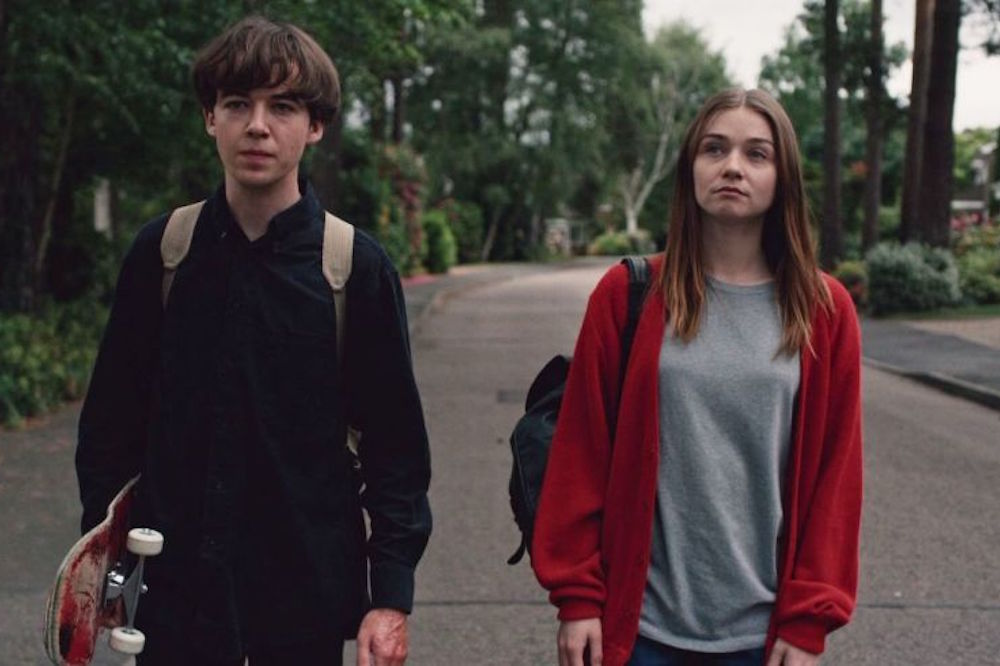The End of the F***ing World, Netflix’s latest original series, is enjoying near-universal acclaim from critics and audiences. The darkly funny and surprisingly poignant show, which ran on Channel 4 in the United Kingdom last October and premiered in the United States last week, is based on the graphic novel of the (un-asterisked) same name by Charles Forsman, and follows two disaffected teenagers as they run away from their respective homes and embark on something of a road trip together.
The hook, if you haven’t already heard, is that one of them, James, doesn’t merely suffer from normal teen angst. He suspects he is a psychopath, and plans to use the trip as an opportunity to murder his travel mate, Alyssa. He has good reason for his suspicions: In the opening episode, James recounts sticking his hand in a deep fryer as a child in an effort to feeling something. More recently, he’s become obsessed with death, killing stray animals and cataloging them in his mind. Alyssa, who randomly approaches him in the school cafeteria one day, would be his first human victim.
Despite lacking any homicidal impulses herself, Alyssa is as engaging a character as James, if not more so. Through voiceovers, we are given glimpses into both characters’ impulses and inner dialogues. One of the show’s most incisive and hilarious articulations is that Alyssa’s natural pubescent tendencies border on sociopathy themselves. The series quickly moves beyond its original setup into something much more memorable, a bloody and high-stakes coming of age tale that deftly avoids every trope of the genre. (And I mean quickly—the show consists of eight episodes of 18 minutes each, and the pace is accordingly snappy.)
The End of the F***ing World approaches its characters with empathy and moral clarity, and a genuine tenderness soon emerges between James and his would-be victim. They are far from the worst people we encounter in the show, and over time, the painful histories behind their nihilistic behavior become clear. Still, a trip that begins as a lark turns out to have grave consequences, and the show doesn’t let the pair off the hook for their behavior. This dynamic culminates with a grisly but arguably justifiable outbreak of violence that sets in motion the major conflict of the series’s second half.
The show is rare in that its conclusion is nearly perfect, providing satisfying arcs for both James and Alyssa, and even a few of the other characters who inhabit its background. While I would gladly watch a second season–without giving too much away–continuing The End of the F***ing World further would necessitate undoing what made its ending so remarkable. American shows regularly make the mistake of going on for far too long to indulge their audiences at the expense of quality: just think of NBC’s The Office, which the network is reportedly pondering bringing back for an unthinkable 10th season. British series tend to be briefer, but with the large amount of praise the show is currently enjoying, it seems possible that Netflix could be tempted to order more episodes. We’ll have to see whether their partners at Channel 4 acquiesce.
Hopefully they won’t. Much better to keep The End of the F***ing World as it is: a hilarious and deeply affecting story about two fucked-up people trying to navigate a fucked-up world, who find each other at just the right time—or just the wrong one, depending on how you look at it.





